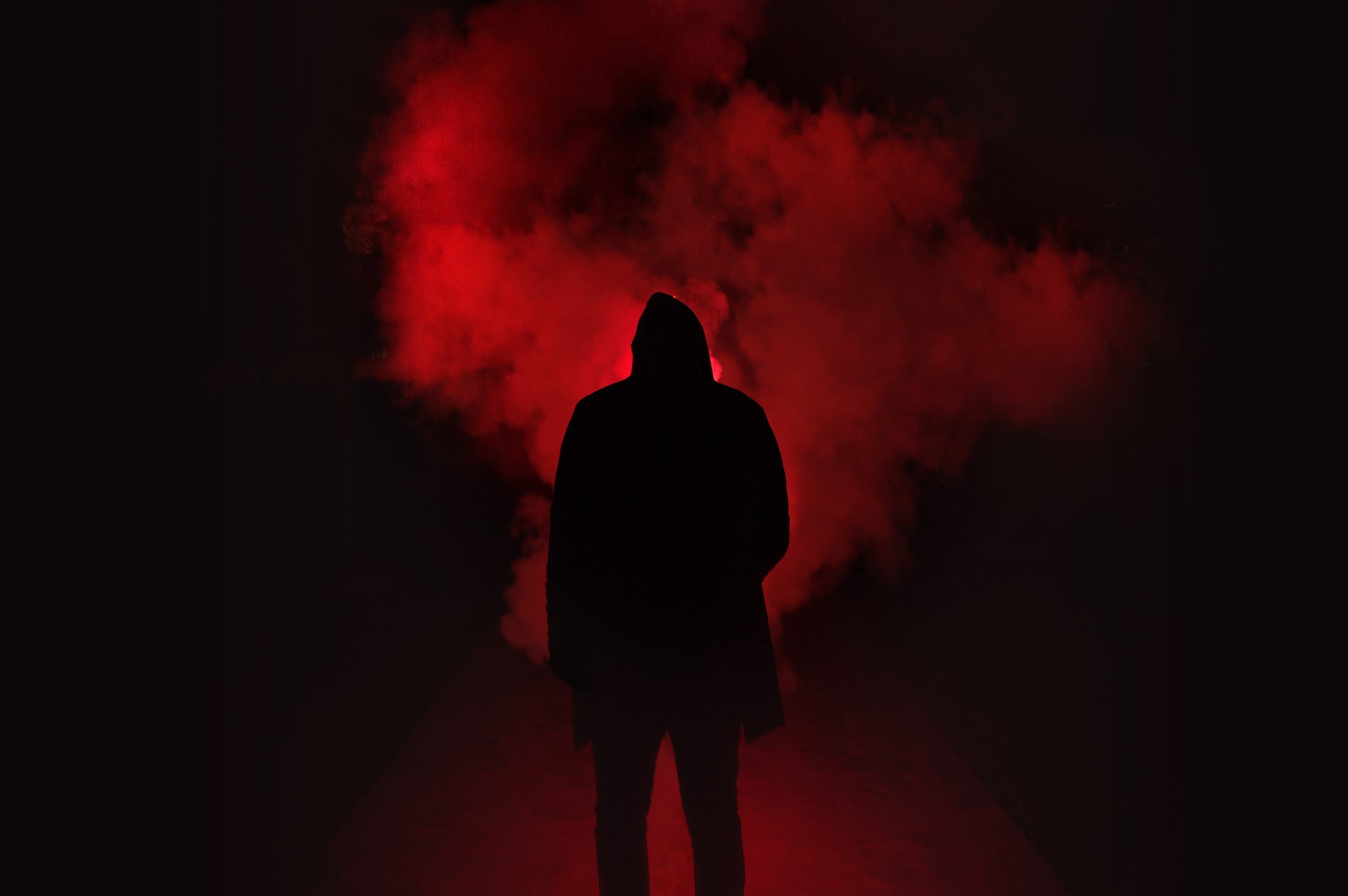BOO!
Made you jump? Good – because in this WXO Campfire, we’re putting it out there that a little bit of fear does you good.
For the most nightmarish time of the year – Halloween – we handed over the mic to our horror experience experts over at the W-Hex-O: The Spooky Community. They (grave)dug deep into what makes a thrilling scare experience, what other experience creators can take and apply in their own fields, and how fear can be a reason for joy, not just terror.
Scott Levkoff has been creating immersive experiences for over 35 years. He reveals the role that spooky experiences have had on immersive theatre, how he got into the business of thrills, and some highlights from his career in ghostmastering – in particular, how his alter ego “Mr. NOBODY” helps audiences to process and release their fears.
Frankfurt-based horror attractions designer Michael Badelt has 22 years’ experience in the theme park industry. He shares a (non-complete) list of what people are most commonly scared of, how we can “play the hormone piano” to trigger strong emotions in our guests, and how fear can help us grow as human beings.
The Making Of A Ghostmaster
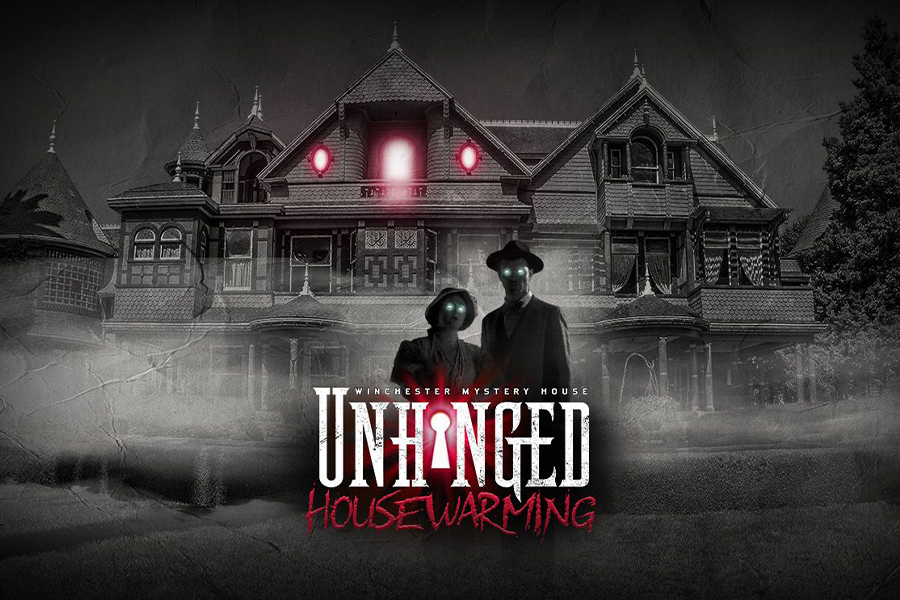
Ghostmaster, immersive designer and director Scott Levkoff has been creating spooky experiences for the last 30 years for hundreds of audiences, from “spookeasys” to big-budget Halloween spectaculars. A self-professed “gloomy child” who found solace in HP Lovecraft novels, Disney’s Haunted Mansion and mystery theatre shows on the radio, his love for everything scary manifests in affectionate, playful and sensual shows that entertain as much as they thrill.
For several years Levkoff has been one of the masterminds behind the Unhinged Halloween productions at Winchester Mystery House in California, a haunted historical landmark that was taken over by a carnival company in the 1920s. Over time, his shows have evolved to include the following elements:
- Worldbuilding: from spiritualist banners and posters through to the outlandish costume designs, most recently by Bruce Mitchell. Many productions are also a tribute to the spook shows of earlier eras, which were a version of early immersive theatre featuring a mash-up of vaudeville, films, cabaret, ghost shows, magic shows, séances, and so on.
- Immersive technology: the most recent Unhinged show featured an IRL monster built by Levkoff, where detail was added to its body through projection mapping. He also designed a “supernatural machine” for an earlier show using a Pepper’s Ghost illusion.
- Embracing lo-fi: you don’t have to use the latest technology to move people. In Mr. NOBODY’s Mystic Midway, people were invited to write down their fears and hang them in a web, which people spent hours reading before it was burned. In another production, inviting people to enter a coffin and be “reborn” provoked some surprisingly strong reactions.
- Keeping a sense of playfulness: where some modern horror productions tend towards pure fear and gore, Levkoff prefers to blend sensuality and horror to keep the feeling lighter and more playful.
- Offering a release from fear: A recurrent figure throughout Levkoff’s productions is his alter ego, Mr. NOBODY: a benevolent, kindly spirit and “fear-eater” that helps audiences to name and release their fears. In Mr Nobody’s Spookeasy in Chinatown, his character helped ghosts face their fear in the afterworld so they can move on, culminating in a group scene where the audience joins in with releasing their own fears.
We think that in any experience, not just a spooky one, these elements of worldbuilding, combining new technology with lo-fi effects, and seeking to connect with and liberate your audience through playfulness and catharsis are all valuable design tools.
The Origins Of Fear & How To Trigger It
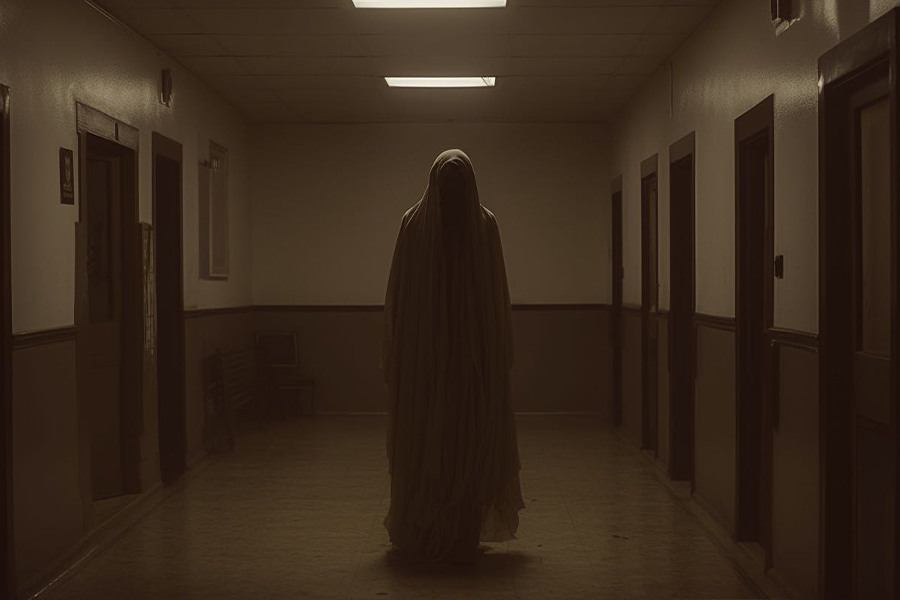
Do you like scary movies? Are you scared of being alone in the dark? Have you ever visited a haunted house attraction, or worked at one? And what’s the weirdest reaction you’ve had to being scared?
Fear can manifest in many different ways for different people. Rooted in our Stone Age origins, we’re still programmed to have a fight or flight response when confronted with something scary. Michael Badelt says that when designing a scare attraction, you’re looking to trigger flight rather than fight, as the latter can be unsafe for both your actors and guests. It’s also impossible to be both angry and afraid at the same time, although we can switch between modes in a split second.
Ultimately, the purpose of fear is to keep us alive, and we’ve developed some reactions to it that scare attraction designers can play with to provoke the reaction they’re after. These scare tactics include:
- Situational awareness. For example, where we stand in the room or our hand and arm positioning, which can be read as reassuring, threatening, or defensive. The goal is to entertain, not traumatise – we want to create a scare with them, not for them.
- Line of sight / eyesight. Everything that comes from above is threatening, and things that target our ankles/feet are inherently scary, because we don’t have arms down there (our primary defense mechanism).
- Types of distraction. Normally you would have one person to attract the audience’s attention, and another to deliver the scare.
- The importance of touch (or lack thereof). It’s not advisable to touch someone in a haunted house setting because it ends the sense of anticipation – by breaking the barrier that we’re most scared of, you’re ruining your own show.
The SCAARE Principle
When training scare actors on how to interact with audiences, Badelt uses Allen Hopps’s “SCAARE Principle”:
- Select target (logistics, body language)
- Categorise guest (decide what will work best)
- Awareness (spatial awareness, behavioural awareness, props and corners)
- Action
- Reaction (for example, a witty reply)
- Escape (plan in advance – if it takes longer than 3 seconds to escape, it’s no longer scary and becomes annoying or funny. There’s nothing more ridiculous than a scare actor hitting a wall!)
This scare actor training is important not only for the safety of the actors and guests, but when it comes to handling difficult situations and de-escalating guests if you’ve made the wrong choice. It also ensures efficiency and consistency so audiences can rely on having the same quality of experience every time.
Your Body The Drug Dealer: Playing The Hormone Piano
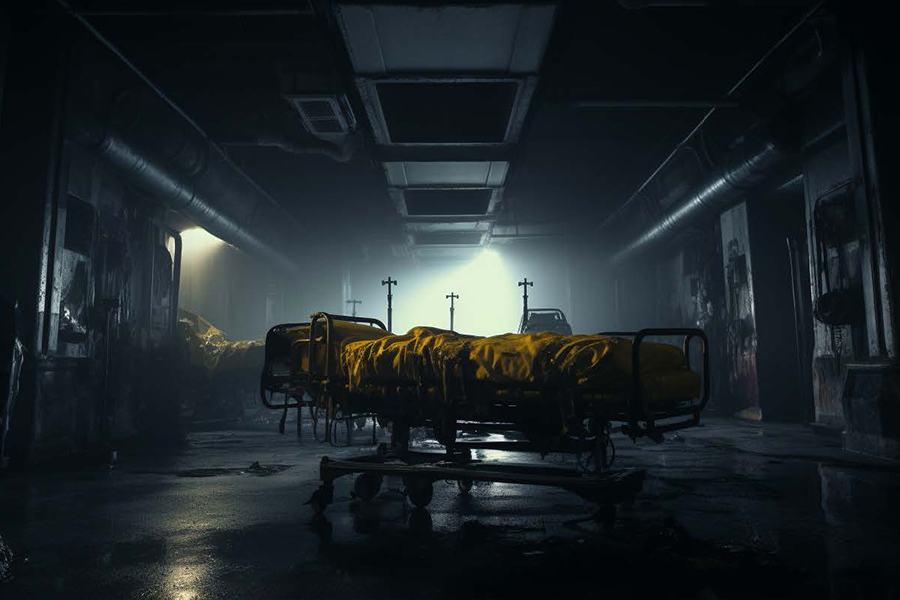
Our modern lives are mostly void of natural predators, but we still long for the kick of mastering a difficult situation. Some fears are learned (such as spiders, clowns, fire, heights, water), and others are instinctive (such as large teeth or the colour red). In any case, most fears can be overcome – in intense cases with therapy, but in mild cases with exposure theory. If you face your fears, you can grow.
Fear doesn’t only exist in our heads: it’s something we feel with our whole body. However, our mind influences how our body reacts – and when we guide and train our thinking in response to a fear, our body might not have the same reaction next time around.
A good scare attraction follows what Badelt calls the “doughnut principle”: a good scare at the start, one in the middle, and a big scare at the finale to make it memorable. (We notice that this is also the same structure as the Peak-End Rule, or as Jasmin Jodry remarked, a good speech.)
To help achieve this cadence, we need to learn to play “the hormone piano”. Our body naturally produces “drugs” that we can play with to create the feeling we want. However, Badelt warns that we shouldn’t overuse the tactics below.
“Don’t play a fast tune – play it slowly and carefully. The funeral march is much better than Mozart!”
Michael Badelt
Adrenaline: prepares us to fight or flee and activates our nerves, with a 2 to 3-minute reaction time since we encounter the event. We can trigger this when we chase or shout at people or have bad smells.
Serotonin: helps you feel calm, confident and patient. It can be triggered by sunlight, and regulates our sleep, mood, digestion, memory, and learning ability. We need positive experiences in a haunted house to get to the pattern identified above – a big scare releases the tension and then builds it up again. In the inbetween periods, we can use nice smells and light to get into this rhythm.
Dopamine: the feel-good or reward hormone. A neurotransmitter that interacts with the brain’s reward system. We can trigger it when a task is completed, through gamification or finding something.
Oxytocin: the cuddle hormone, essential for childbirth. It promotes trust, empathy, and bonding, and increases with emotional bonding, physical contact, sex, and playing with pets. In a scare attraction it’s often triggered through the (somewhat outdated) “damsel in distress” theme or being asked for help, which can be used to make the switch between scary and feel-good.
Endorphins: produced in response to stress/discomfort by neurotransmitters targeting opiate receptors. They reduce pain and induce pleasure, like when eating or working out. We can trigger them by making things physical (for example getting participants to climb or crawl) so they feel good when they’ve survived the ordeal, and also through F&B.
The W-Hex-O Take Out
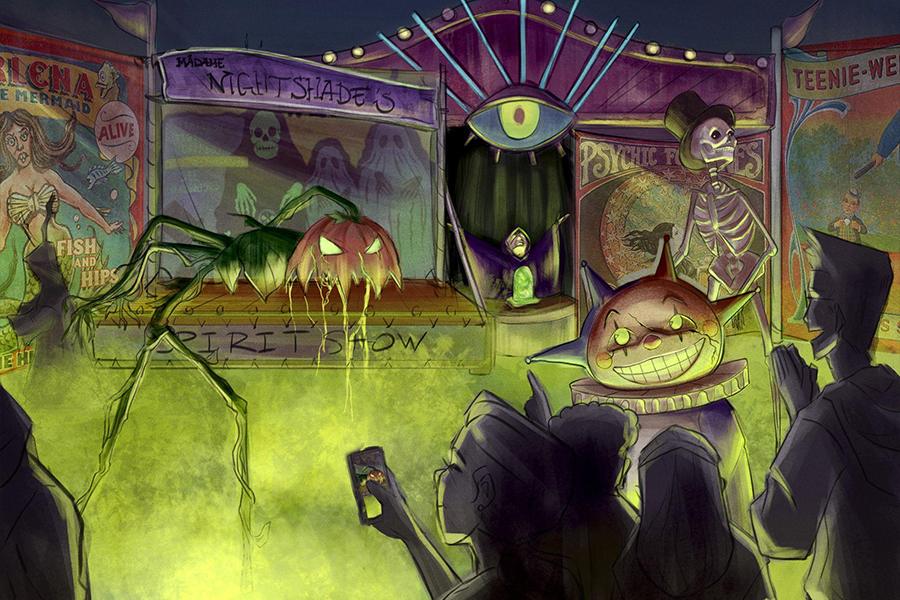
We believe in cross-sector pollination and innovation at the WXO – and it’s fascinating to think about how the techniques that germinated in horror attractions might be applied elsewhere.
It might be beneficial to include fear in an experience as a challenge or icebreaker to help guests overcome social anxiety, or use a physical moment or challenge to create a sense of bonding and community.
And by deliberately using certain elements and activities to trigger certain hormones, we can give our experiences that extra punch. In the words of Maya Angelou:
“I’ve learned that people will forget what you said, people will forget what you did, but people will never forget how you made them feel.”
Maya Angelou
That’s why fear actually brings us a lot of joy: because it’s so rewarding to overcome.
So next time you’re designing an experience, ask yourself:
- How might I use fear as a tool for helping people grow?
- How can I “play the hormone piano” to give my experience more impact?
- How can I use fear to release emotion and bring people together?
Want to come to live Campfires and join fellow expert experience creators from 39+ different countries as we lead the Experience Revolution forward? Find out more here.

